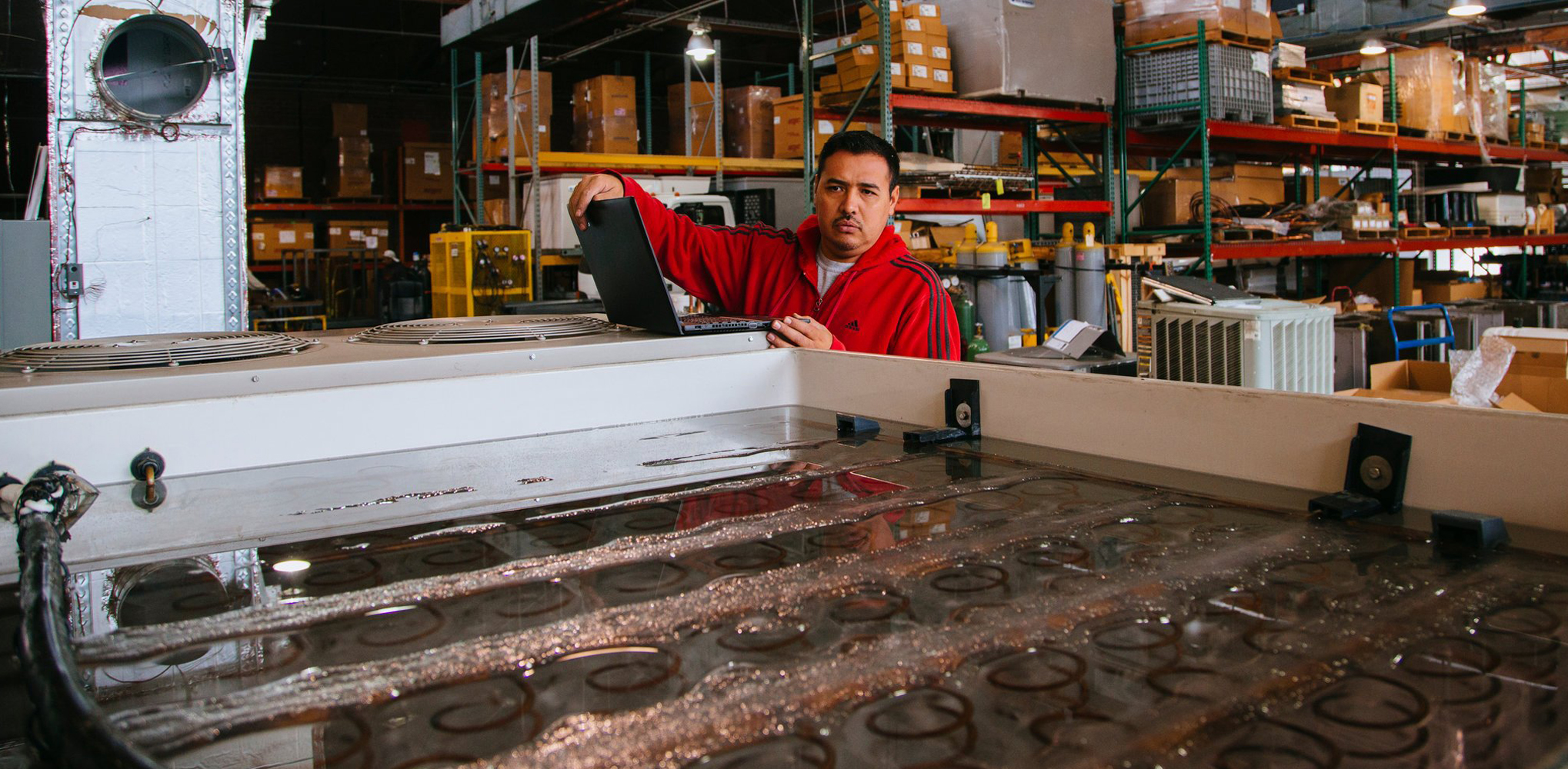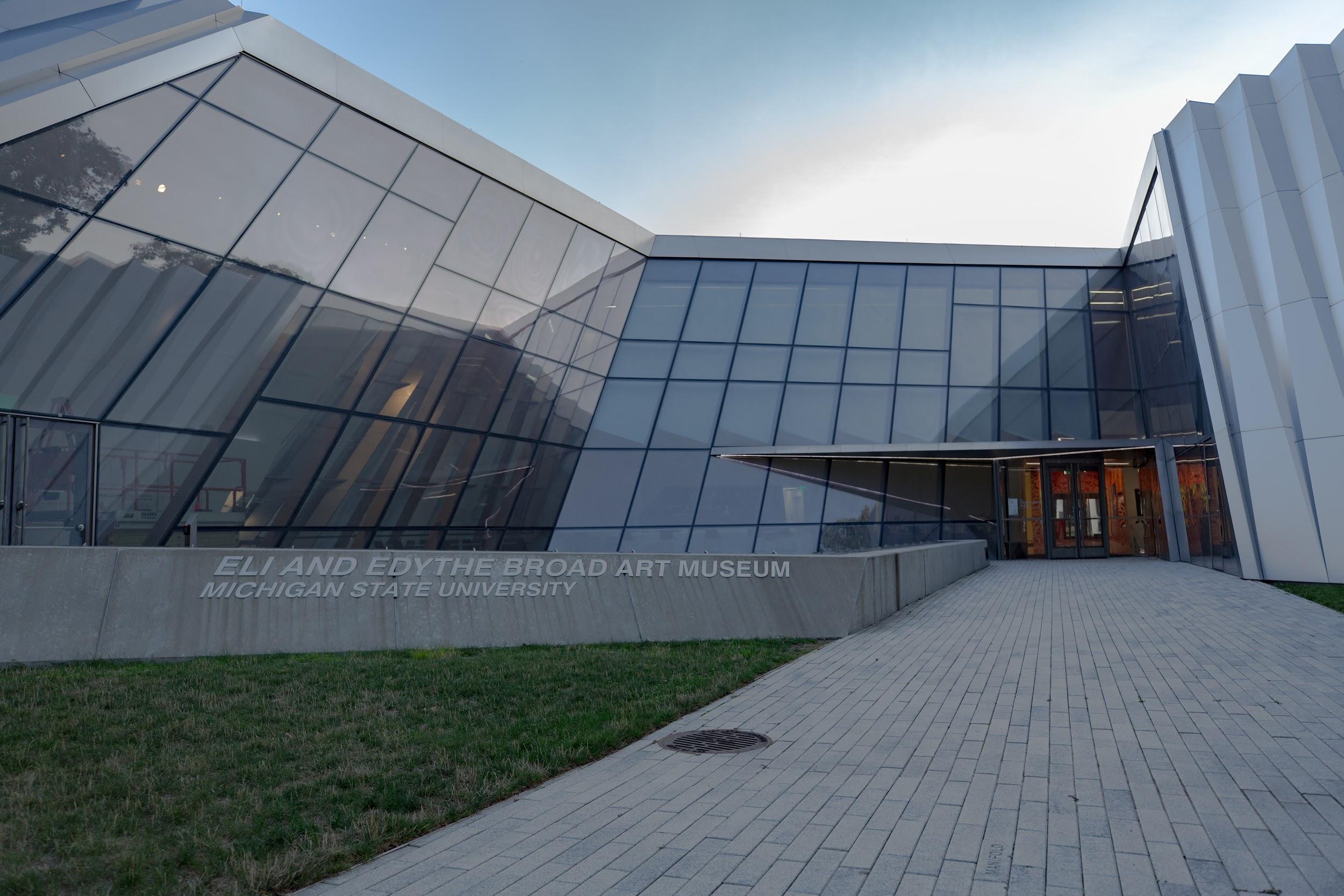Architects: Showcase your next project through Architizer and sign up for our inspirational newsletter.
Heating, ventilation and air conditioning (HVAC) systems are as vital to a building as lungs are to a human being. These systems employ complex networks of air handlers, compressors, cooling towers and other equipment to make sure that the air inside of a building is clean, conditioned and comfortable. But running all of that equipment consumes a lot of energy. According to the U.S. Department of Energy, these processes account for 48% of energy use in homes and 40% to 60% of energy use in commercial buildings. If not run efficiently, these systems can quickly drain wallets, devour natural resources and dirty the atmosphere.
The good news is that the HVAC industry has come a long way since the days of shoveling coal into furnaces to keep the house warm. Recent breakthroughs in renewable energy and smart technology are making these systems more sustainable than ever before, consuming less energy while promoting healthier indoor and outdoor environments. As you consider which HVAC system is right for your next project, check out eight of the most exciting innovations below:
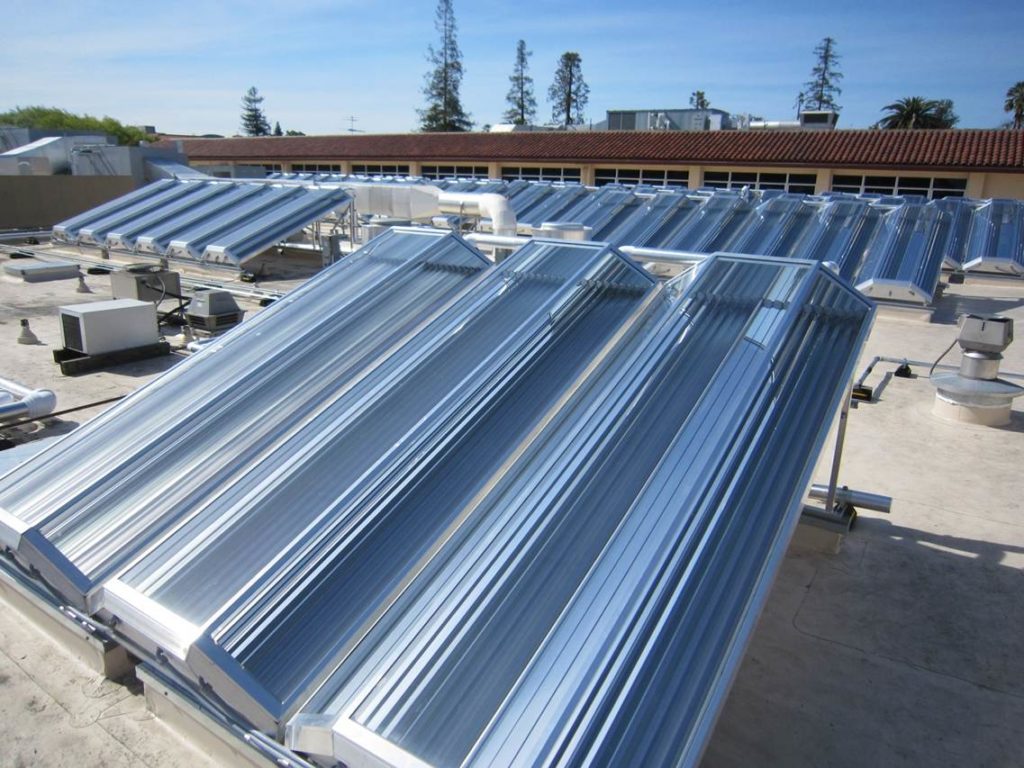
Micro-Concentrator solar panels; via Chromasun
Solar-Powered Air Conditioning
Manufactured by Chromasun
Typically, when the hot sun is beating down on a building, it is not reducing the air conditioning bill, but that is exactly what Chromasun’s Micro-Concentrator makes possible. These compact, rooftop panels contain special mirrored lenses, which automatically follow the sun’s path, concentrating and capturing solar energy. That energy is then utilized by the building’s HVAC system, converting peak sun loads into efficient air conditioning.
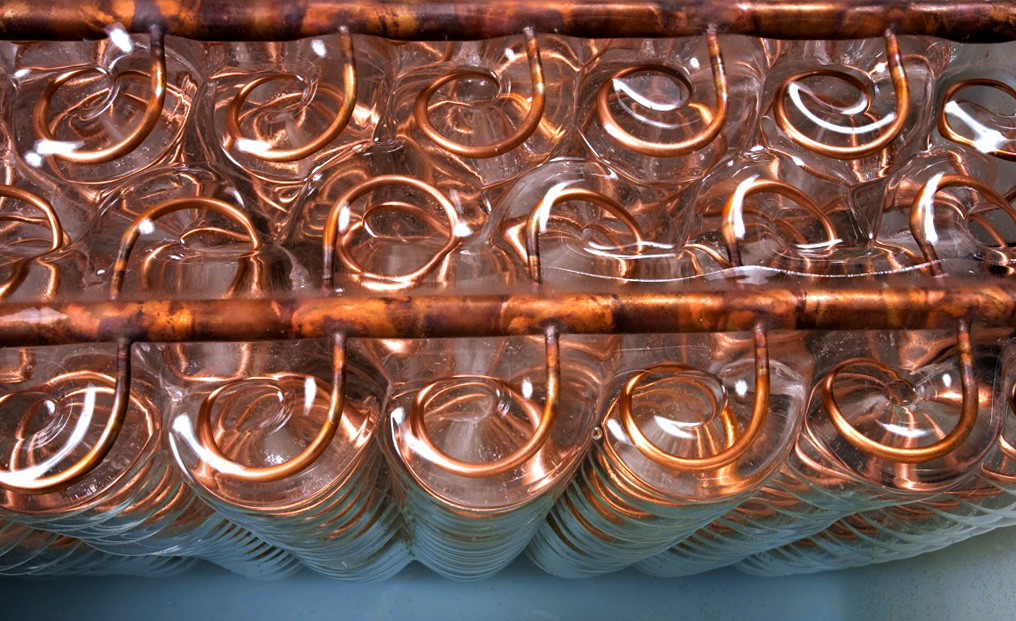
The thermal battery inside an Ice Bear unit; via Ice Energy
Ice-Powered Air Conditioning
Manufactured by Ice Energy
The Ice Bear is a thermal battery that transforms existing air conditioners into cost-effective cooling machines. During the night, when the electric grid is less burdened, Ice Bear fills with water and freezes it into a block of ice. During the day, this ice is used to provide affordable air conditioning to the building, without running the air conditioner’s energy-guzzling compressor. This results in 95% less energy use during the hottest hours of the day, drastically cutting both electricity bills and carbon emissions.
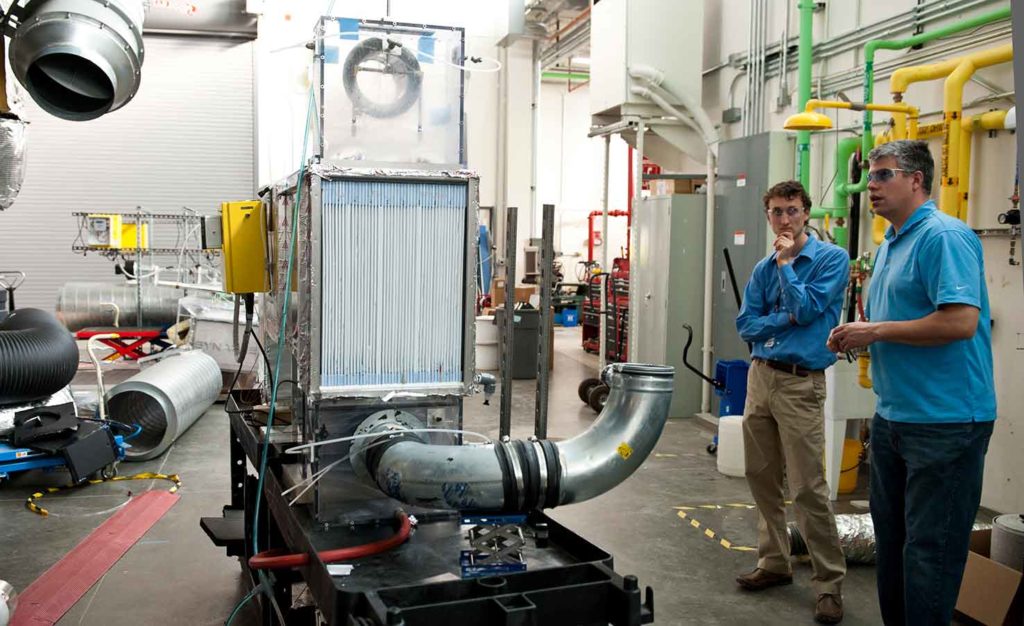
NREL engineers with the DeVAP prototype. Photo by Dennis Schroeder; via NREL
DeVAP Air Conditioning
Developed by The National Renewable Energy Laboratory
The Desiccant-Enhanced Evaporative Air Conditioner, or DEVap for short, is a new technology that has the potential to revolutionize the HVAC industry. The device combines the cooling power of evaporation with the dehumidifying power of liquefied desiccants — the salt-like substance found in “Do Not Eat” packets — to create an air conditioner that creates cold, dry air at a fraction of the cost. Although not yet commercially available, the prototypes have demonstrated an astounding 90% reduction in energy use compared to traditional air conditioners.
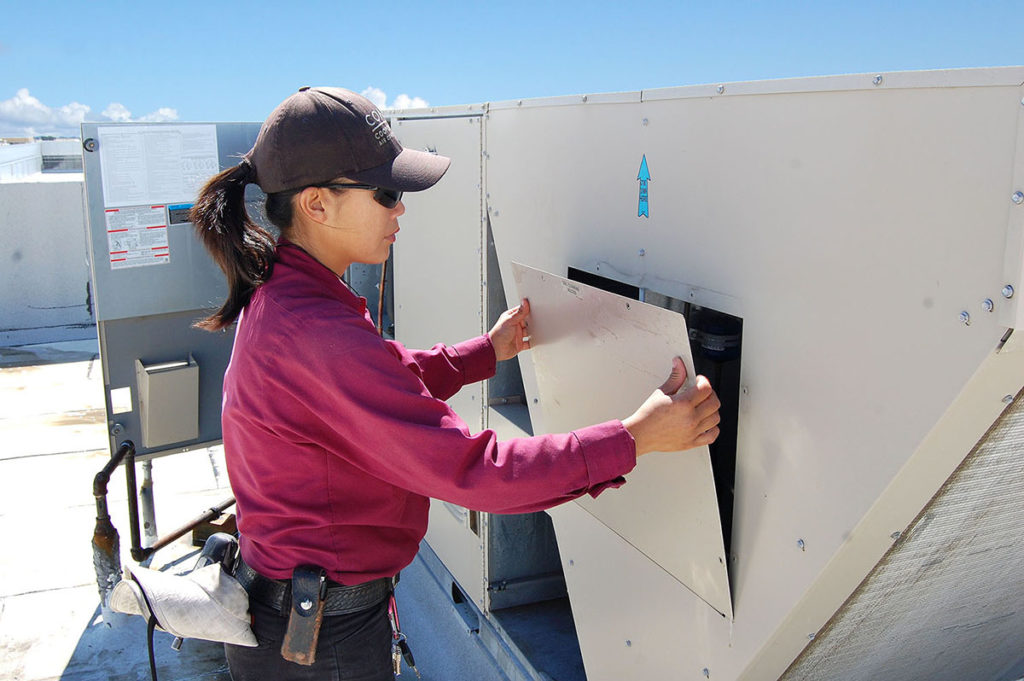
HVAC technician installing CATALYST on an older rooftop unit; via Cooper Oates Air Conditioning
Sustainable Retrofits
Manufactured by Transformative Wave
Replacing old HVAC equipment can be expensive and time consuming but leaving clunky, outdated technology in place can also be costly and wasteful. That is why Transformative Wave has developed a new generation of sustainable retrofit technology. The system, known as CATALYST, installs directly into existing rooftop units, endowing them with the latest sustainable features — economizers, variable fan speeds, demand-response ventilation, smart controls and automated capabilities — leading to a 25% to 50% reduction in energy use.
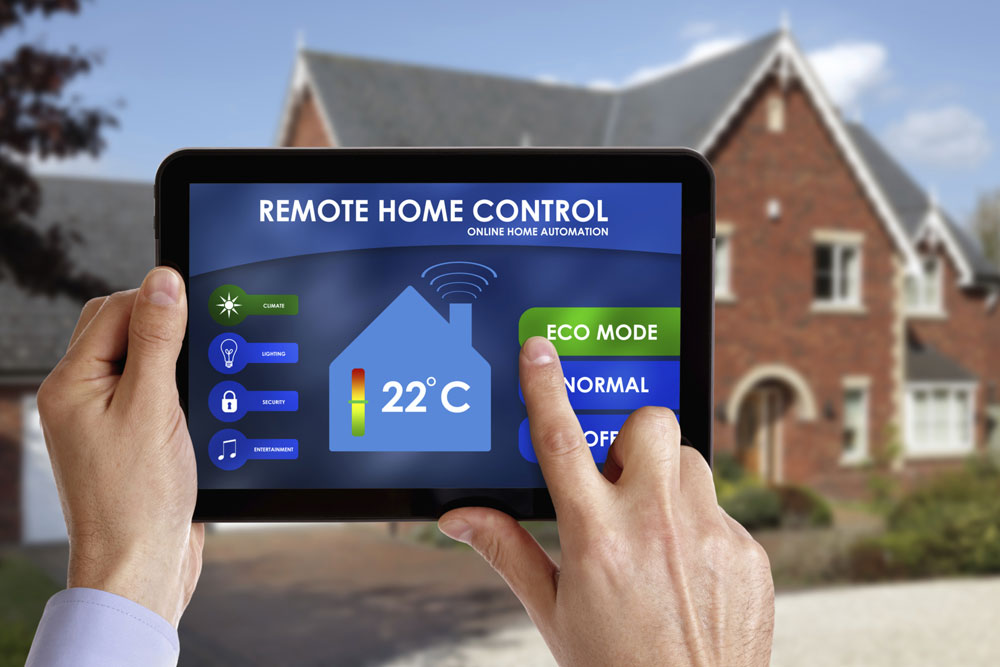
Smart thermostat controls; via Ebizbydesign
Smart Thermostats
Manufactured by Nest, Honeywell, Ecobee and Emerson
The Internet of Things has finally joined home HVAC systems with the help of smart thermostats. These devices connect to smartphones and tablets, allowing homeowners to control their heating and cooling systems from anywhere in the world. The thermostats can automatically adjust to suit the homeowner’s personal preferences, notify them of maintenance issues, and help them monitor and reduce energy consumption over time.

Diagram of the digital ceiling; via Cisco
Digital Ceilings
Manufactured by Cisco
The digital ceiling is the future of building automation. These ceilings are equipped with a variety of sensors — detecting motion, occupancy levels, temperature, carbon dioxide levels and more —that converge the building’s lighting, security and HVAC systems into a single, easy to manage network. These adaptive sensors learn the daily habits of building occupants and automatically adjust air and light settings accordingly; maximizing comfort while minimizing energy waste.
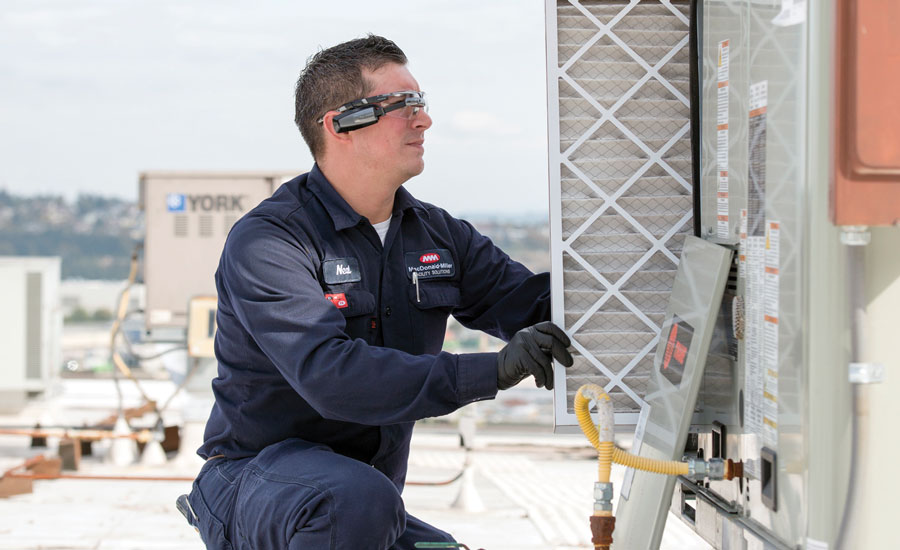
HVAC technician wearing smart glasses while on a service call; via ACHRNews
Wearable Technology
Manufactured by XOi Technologies
No matter how well designed an HVAC system may be, if it is not properly maintained it will become increasingly inefficient over time. XOi Technologies hopes to combat this by arming field technicians with smart glasses; connecting them to an online network of HVAC experts. The glasses transmit video in real time, allowing multiple technicians to inspect and diagnose a system remotely while automatically generating a detailed service report for the owner. This innovative software is compatible with many popular brands of smart glasses, including realwear, Vuzix and GoPro.
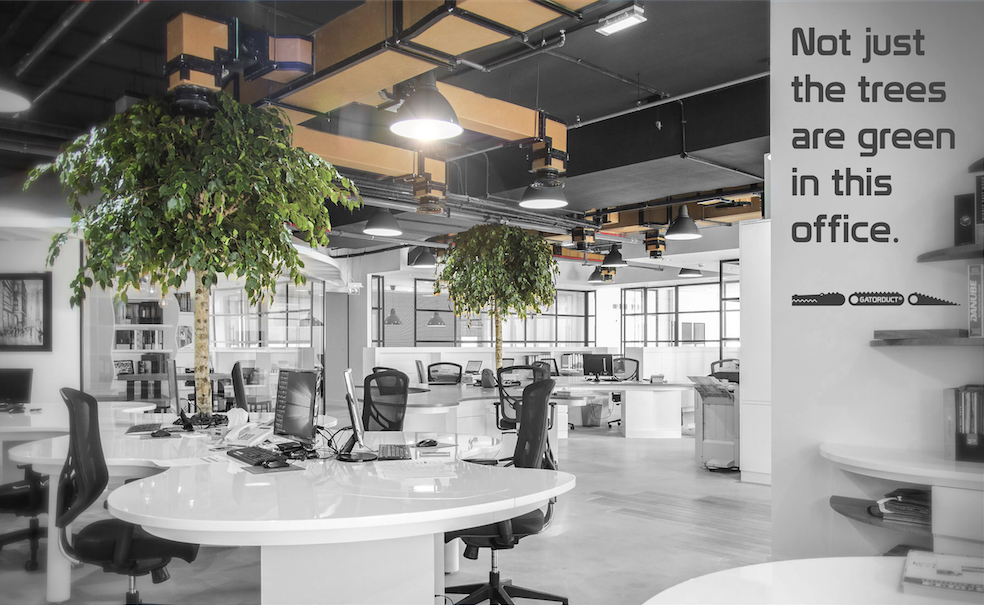
GatorDucts exposed in an office space; via GatorDuct
Recyclable Ductwork
Manufactured by GatorDuct
Not all sustainable solutions involve high-tech gadgets and Wi-Fi connections. GatorDuct is a simple cardboard product — treated with a fire-resistant and waterproof coating — that takes the place of ordinary HVAC ductwork. These triple-walled cardboard ducts are stronger, lighter, cheaper and require 20% less insulation than their sheet metal counterparts. The kraft paper surface also allows the ductwork to be custom printed with decorative patterns and company logos. Best of all, GatorDucts are produced from sustainably managed forests and are 100% recyclable.
Architects: Showcase your next project through Architizer and sign up for our inspirational newsletter.
